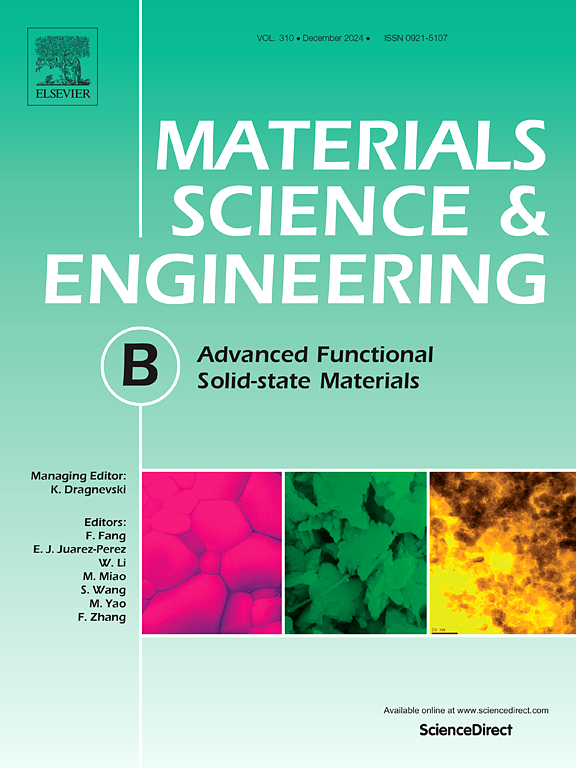Superior electrochemical performance of zinc-ion batteries with fine-grained and textured zinc anode produced by high-pressure torsion
IF 3.9
3区 材料科学
Q2 MATERIALS SCIENCE, MULTIDISCIPLINARY
引用次数: 0
Abstract
Zinc-ion batteries are promising alternatives to lithium-ion batteries, offering advantages in safety, cost, and environmental impact. However, their performance is often limited by the functioning of the zinc anode. This study employs severe plastic deformation via the high-pressure torsion (HPT) method to enhance the electrochemical performance of zinc anodes. HPT reduced the grain size from > 1000 μm to 20 μm and introduced a (002) basal texture. The battery assembled with HPT-processed zinc demonstrated improved cycling stability, rate performance, and specific discharge capacity (>500 mAh/g at 0.5 A/g after 50 cycles), particularly at high current densities. This performance enhancement was attributed to grain-boundary and texture effects on improved ion transfer (confirmed by electrochemical impedance spectroscopy), fast redox reaction kinetics (confirmed by cyclic voltammetry), and reduced corrosion (confirmed by microscopy and potentiodynamic polarization test). This study highlights the potential of severely deformed materials with textured fine grains for advanced rechargeable battery technologies.
求助全文
约1分钟内获得全文
求助全文
来源期刊

Materials Science and Engineering: B
工程技术-材料科学:综合
CiteScore
5.60
自引率
2.80%
发文量
481
审稿时长
3.5 months
期刊介绍:
The journal provides an international medium for the publication of theoretical and experimental studies and reviews related to the electronic, electrochemical, ionic, magnetic, optical, and biosensing properties of solid state materials in bulk, thin film and particulate forms. Papers dealing with synthesis, processing, characterization, structure, physical properties and computational aspects of nano-crystalline, crystalline, amorphous and glassy forms of ceramics, semiconductors, layered insertion compounds, low-dimensional compounds and systems, fast-ion conductors, polymers and dielectrics are viewed as suitable for publication. Articles focused on nano-structured aspects of these advanced solid-state materials will also be considered suitable.
 求助内容:
求助内容: 应助结果提醒方式:
应助结果提醒方式:


